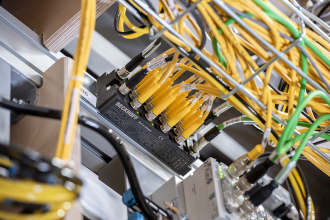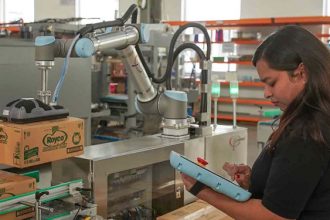Simulation and Emulation in Risk Management

You’ve decided it’s time for a new sortation system in an existing building. Perhaps a change in packaging sizes or types is leading you to reconfigure your conveying systems. Or perhaps you have a greenfield project underway. In any case, you’re about to make a big investment in new material handling equipment and you want to mitigate risk.
The best way to do this is through simulation and emulation in risk management. By creating a “digital twin” of your project, your potential material handling partner can ensure your new system or systems will run smoothly and efficiently, making the most of your expenditure. A digital twin is a virtual representation that serves as the real-time digital counterpart of a physical object or process. With these virtual practice runs, you’ll know exactly what you’re getting into and what it can deliver.
Simulation in Risk Management
Simulation will begin while you are still in the proposal phase of an equipment purchase. Your equipment partner will put together scenario plans, running different models. The end result is that the simulation in risk management proves that the planned project will be able to handle your variables. Once agreed upon, it’s time to move into the emulation phase.
Emulation in Risk Management
Emulation is a tool that takes risk levels down through validation. In the same virtual duplicate of your new project, your original equipment manufacturer (OEM) will write code, run the code, and ensure everything will work well—all before you begin actual construction on the new project. This delivers a high level of confidence to both the OEM and the end user, providing both parties with the assurance that the system should work.
Benefits of Simulation and Emulation in Risk Management
One of the best parts about simulation and emulation in risk management is that they are scalable, so your OEM partner can design a digital twin of a device, a subsystem, or an entire system. This could look like a conveyor roller, a conveyor section, or an entire warehouse, for instance.
Additionally, should a hiccup arise during installation, your equipment manufacturer can return to the digital twin, determine how to overcome the issue, and move the project forward. In a brownfield site, for instance, perhaps the customer forgot about a large steel column in the middle of the planned conveyor path. The digital tool will serve as the tool to reconfigure the conveyor, solving the problem.
While simulation and emulation in risk management have big payoffs for the OEM, the same holds true for the end user. The OEM benefits from proving their concepts can work, thus cutting down on risk of implementation. The end user also gets these benefits, but others as well. For instance, if you’ve got a 3D model of your facility, the simulation and emulation tools can help in multiple areas of the warehouse, including the yard and dock. So if your product mix or storage unit is about to change, you can simulate that change to see what impact it might have on workflow–and adjust accordingly.



